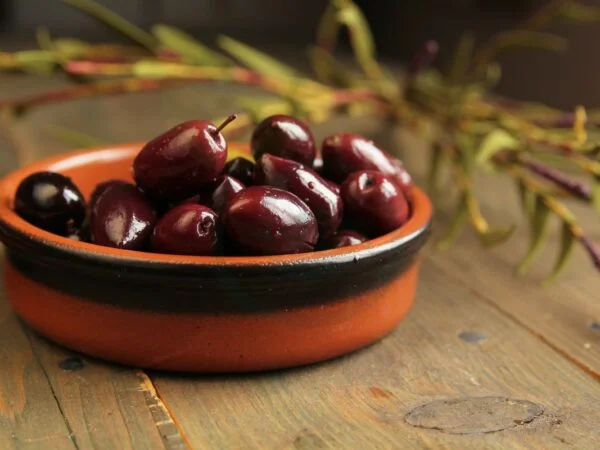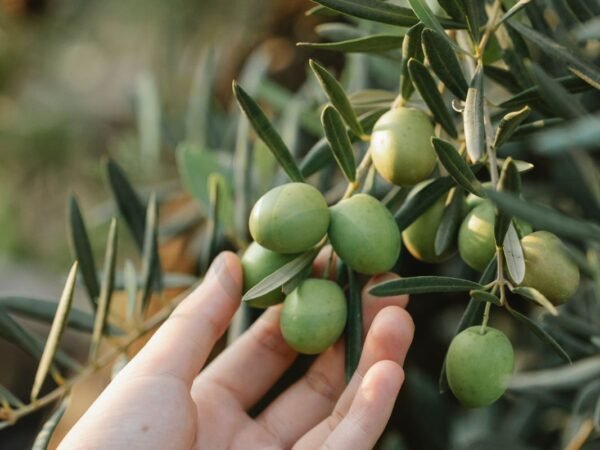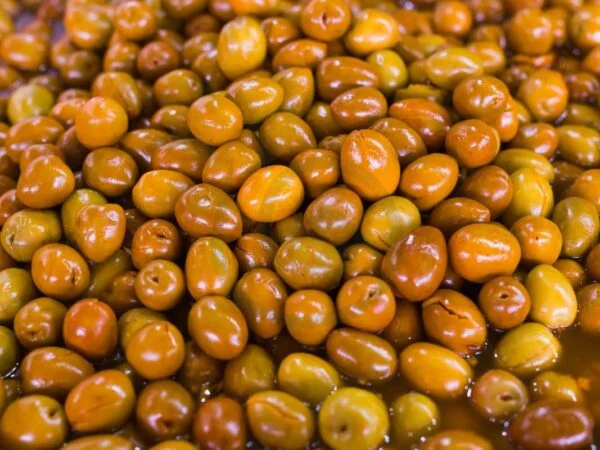Curious about why your olive tree's leaves are turning yellow? It could be due to various reasons, from nutrient deficiencies to overwatering. Understanding these factors is crucial for nurturing your plant back to health. Stay tuned as we delve into the common causes of yellowing leaves in olive trees and how you can address them effectively. By gaining insights into these issues, you'll be better equipped to provide the care and attention your olive tree needs to thrive. Let's uncover the mysteries behind those yellow leaves together!
Key Takeaways
- Identify the Cause: Understanding why your olive tree's leaves are turning yellow is crucial in addressing the issue effectively.
- Nutrient Check: Address potential deficiencies by providing the necessary nutrients through soil amendments or fertilizers.
- Hydration Matters: Maintain proper watering practices to prevent stress and yellowing of leaves due to under or over-watering.
- Sunlight Optimization: Ensure your olive tree receives adequate sunlight to promote healthy growth and vibrant green leaves.
- Prune with Purpose: Regular pruning and maintenance can help improve air circulation and sunlight exposure, reducing the risk of yellowing leaves.
- Vigilance against Pests and Diseases: Implement proactive measures to manage pests and diseases that can contribute to leaf discoloration.
Understanding Yellow Leaves
Nutrient Deficiencies
Yellow leaves on your olive tree could be a result of nutrient deficiencies. If the tree lacks nitrogen, its leaves may turn yellow. Similarly, insufficient iron can cause leaf discoloration, and a shortage of potassium might also lead to yellowing leaves.
Consider using fertilizers specifically formulated for olive trees. These products are designed to replenish essential nutrients that may be lacking in the soil.
Watering Issues
Another common reason for yellow leaves is related to watering problems. Overwatering can cause root rot and subsequently lead to yellowed foliage. Conversely, if you underwater your olive tree, the leaves may wilt and turn yellow due to dehydration.
To prevent such issues, ensure that you water your olive tree consistently but not excessively. Find a watering schedule that keeps the soil moist but not waterlogged.
Sunlight Impact
The amount of sunlight your olive tree receives plays a crucial role in leaf health. Insufficient sunlight can cause chlorosis or yellowing of the leaves due to inadequate photosynthesis. On the other hand, excessive direct sunlight can scorch the leaves, turning them yellow as well.
To maintain optimal leaf coloration, find a suitable location for your olive tree where it receives adequate sunlight without being exposed to intense rays all day long.
Seasonal Changes
Seasonal changes can also contribute to temporary leaf discoloration on olive trees. During certain times of the year when natural leaf shedding occurs or when temperatures drop significantly in winter months, you may notice some yellowing on the foliage.
Understanding these seasonal variations will help you differentiate between normal physiological responses and potential nutrient deficiencies or other issues affecting your olive tree's health.
Identifying Causes
Underwatering Signs
Underwatering can cause yellow leaves on olive trees. Dry soil and wilted leaves are clear indicators of insufficient water supply. If the yellow leaves feel crispy or brittle, your tree might lack water. Underwatered olive trees tend to shed their leaves prematurely.
When an olive tree is overwatered, its foliage may turn yellow due to excess moisture in the soil. Soggy soil coupled with yellowing leaves could be signs of overhydration. The roots can become suffocated from too much water, resulting in leaf discoloration. Overwatering also increases the risk of fungal diseases affecting the tree's health.
Overwatering Effects
Chlorosis is a common issue that leads to yellowing between veins while leaving veins green in olive trees. This condition often results from iron deficiency or imbalanced soil pH levels which contribute to chlorotic symptoms manifesting as yellow foliage. Addressing these nutrient deficiencies promptly can help restore your olive tree's health.
Pest infestations like aphids feeding on sap can distort and turn olive tree leaves yellow. Spider mites are another pest that causes stippling and small yellow spots on the foliage when they attack the plant. Scale insects infestation may also lead to stunted growth and overall yellowness in an affected olive tree.
Addressing Nutrient Deficiencies
Soil Amendments
Adding organic matter to the soil is crucial for improving its fertility and preventing nutrient deficiencies in olive trees. Incorporating compost into the soil helps retain moisture, fostering healthy root growth. By adjusting the soil pH, you can alleviate chlorosis symptoms in olive trees, which often manifest as yellow leaves.
Organic matter such as compost enriches the soil with essential nutrients, ensuring that your olive tree receives adequate nourishment. For example, mixing well-rotted manure or compost into the planting hole before placing your tree can significantly benefit its growth. Maintaining a layer of mulch around the base of your olive tree helps conserve moisture and gradually releases nutrients back into the soil.
Fertilization Schedule
Establishing a regular fertilization schedule is key to ensuring proper nutrient availability for your olive tree. Applying a balanced fertilizer containing nitrogen, phosphorus, and potassium is essential for addressing any deficiencies that lead to yellowing leaves. Fertilizing during the growing season provides vital nutrients when your olive tree needs them most.
Creating a fertilization plan based on your specific olive tree's needs can help combat yellow leaves caused by nutrient deficiencies effectively. For instance, using a slow-release fertilizer ensures a steady supply of nutrients over time rather than providing an immediate but short-lived boost. Moreover, conducting a soil test periodically allows you to adjust your fertilization routine according to your olive tree's requirements.
Watering Tips for Prevention
Essential Techniques
Pruning olive trees by removing dead or diseased branches is crucial for promoting overall tree health. This practice allows the tree to focus its energy on producing healthy leaves, preventing yellowing foliage. Mulching around the base of the tree helps conserve soil moisture and regulates temperature, creating optimal conditions for growth. Proper irrigation techniques play a significant role in preventing yellow leaves on olive trees by ensuring they receive adequate water without being overwatered.
-
Pros:
-
Promotes overall tree health
-
Helps prevent yellowing foliage
-
Creates optimal conditions for growth
-
Cons:
-
Requires regular maintenance
-
Improper pruning can harm the tree
Balancing the watering needs of olive trees is essential to prevent yellow leaves. These trees thrive in well-draining soil to avoid waterlogged roots that can lead to leaf discoloration. Finding the right balance between watering frequency and drainage capacity is crucial for maintaining leaf health. Providing olive trees with adequate nutrients through proper fertilization practices without overfeeding them also plays a vital role in preventing yellow foliage.
- Olive trees require well-draining soil.
- Balance watering frequency and drainage capacity.
- Provide adequate nutrients without overfeeding.
Maximizing Sunlight Exposure
To ensure your olive tree stays healthy and vibrant, maximizing sunlight exposure is crucial. Regularly inspecting the leaves for signs of pests or diseases is a key strategy to maintain optimal health. By spotting issues early on, you can address them promptly and prevent further damage.
Promoting biodiversity in your garden can also help reduce pest infestations naturally. Introducing plants that attract beneficial insects or birds can create a balanced ecosystem that supports the overall health of your olive tree. Maintaining good overall tree health through proper watering practices and nutrient-rich soil minimizes the risk of yellowing leaves.
Creating an environment that fosters biodiversity not only benefits your olive tree but also contributes to the well-being of other plants in your garden. For example, planting flowers that attract pollinators like bees and butterflies can enhance pollination for all plant species present. This interconnectedness in nature helps maintain a harmonious balance within your garden ecosystem.
Incorporating diverse plant species around your olive tree can act as a natural barrier against pests, reducing the need for chemical interventions that may harm beneficial organisms. For instance, planting aromatic herbs like lavender or rosemary near the base of the tree can deter certain pests while adding beauty and fragrance to your garden space.
Pruning and Maintenance
Regular Pruning Tips
Prune olive trees in the dormant season to encourage new growth. Remove crossing or rubbing branches to enhance air circulation within the tree. Thinning out the canopy allows more light to penetrate, reducing yellow leaves.
Regular pruning helps olive trees stay healthy. It's essential for maintaining good airflow around the tree. Removing problematic branches can prevent diseases from spreading throughout the tree.
Ongoing Care
Monitor soil moisture levels regularly to avoid over or underwatering your olive tree. Extreme weather conditions can lead to leaf discoloration, so protect your tree accordingly. Fertilizing your olive tree provides essential nutrients for healthy leaf coloration.
Keeping an eye on soil moisture ensures that your olive tree gets just the right amount of water it needs. Shielding your plant from harsh weather conditions is crucial for preventing yellow leaves caused by stressors like extreme heat or cold.
Pest and Disease Management
Common Pests
Aphids, spider mites, and scale insects are common pests that lead to yellow leaves on olive trees. For example, aphids suck sap from the leaves, causing them to turn yellow. Similarly, spider mites can create webbing on the foliage and cause discoloration.
Olive fruit flies can damage fruits, resulting in leaf discoloration as well. These pests lay eggs in olives leading to larvae infesting the fruit. Moreover, caterpillars feeding on olive tree foliage may also result in areas of yellowed leaves.
Disease Control
Preventing fungal diseases like Verticillium wilt is crucial for maintaining leaf health. This disease affects the vascular system of plants and causes wilting or yellowing of leaves due to lack of water uptake.
Treating bacterial infections promptly is essential as they can cause yellowing leaves too. Bacterial infections often manifest as dark lesions on plant tissues which then spread throughout the plant if not addressed promptly.
Proper sanitation practices play a key role in reducing the risk of disease transmission among olive trees. By removing infected plant material and debris regularly, you can prevent diseases from spreading further.
Special Considerations for Potted Trees
Potted Tree Care
When your olive tree is in a pot, picking the right soil mix is essential. Opt for one that drains well to prevent waterlogging and subsequent yellowing leaves. Repotting regularly helps avoid nutrient deficiencies that can lead to leaf discoloration. Make sure your potted olive tree gets enough sunlight and airflow; this fosters vibrant foliage.
To keep your topiary olive trees looking their best, pruning is key. Regular trimming not only maintains their shape but also supports healthy growth and prevents yellow leaves. Proper feeding and watering are crucial for preventing leaf yellowing in these ornamental trees. Shielding topiaries from harsh weather conditions like strong winds or excessive heat safeguards their leaf color.
Preventive Measures and Solutions
Preventive Strategies
Implementing good cultural practices is crucial to prevent olive trees from developing yellow leaves. Regularly monitoring the tree's health and promptly addressing any pest or disease issues can help avoid leaf discoloration. Providing optimal growing conditions, such as proper sunlight exposure and well-draining soil, significantly reduces the risk of yellow foliage. Ensuring that the tree receives adequate water without being overwatered is also essential in maintaining healthy green leaves.
-
Pros:
-
Promotes overall tree health
-
Reduces the likelihood of leaf discoloration
-
Cons:
-
Requires consistent monitoring and care
Recovery Tips are essential for revitalizing olive trees with yellow leaves. Adjusting watering practices by ensuring a balance between hydration and avoiding waterlogging can aid in reviving the tree. Applying appropriate fertilizers rich in essential nutrients like nitrogen, phosphorus, and potassium can address any underlying nutrient deficiencies that may be causing leaf yellowing. Pruning damaged or diseased branches not only stimulates new growth but also enhances the overall health of the olive tree.
- Adjust watering practices to maintain soil moisture levels.
- Apply suitable fertilizers to address nutrient deficiencies.
- Prune damaged or diseased branches carefully to encourage new growth.
Recovery Tips
Adjusting watering practices is vital when dealing with olive trees exhibiting yellow leaves due to various factors like overwatering or underwatering. By ensuring that you provide adequate water without drowning the roots, you can facilitate recovery by restoring moisture balance within the plant's system.
Applying appropriate fertilizers enriched with key nutrients helps replenish any deficiencies present in the soil that might be contributing to leaf discoloration issues in olive trees. Nitrogen-rich fertilizers aid in promoting healthy green foliage while phosphorus supports root development and flower production, ultimately aiding in leaf recovery for your olive tree.
- Key Information:
- Water consistently but avoid waterlogging.
- Choose fertilizers high in nitrogen for lush foliage regrowth.
You've now unlocked the secrets to why your olive tree's leaves turn yellow. By understanding the causes, addressing nutrient deficiencies, optimizing care routines, and staying vigilant against pests and diseases, you're well-equipped to ensure your olive tree thrives. Remember, a little proactive care goes a long way in keeping those leaves lush and green.
So, go ahead and put your newfound knowledge into action. Give your olive tree the TLC it deserves, and watch it flourish under your attentive eye. Your efforts will not only revive those yellowing leaves but also foster a healthier, happier tree. Happy gardening!
Frequently Asked Questions
Why are my olive tree leaves turning yellow?
When olive tree leaves turn yellow, it could be due to various reasons like nutrient deficiencies, overwatering, pests, or diseases. Understanding the specific cause will help you address the issue promptly and ensure your olive tree's health.
How can I identify the causes of yellow leaves on my olive tree?
To identify why your olive tree has yellow leaves, observe closely for signs of nutrient deficiencies such as pale leaf color or leaf drop. Check for overwatering symptoms like wilting or root rot. Look out for pest infestations or disease spots on the foliage.
What are some effective watering tips to prevent yellow leaves on my olive tree?
Ensure proper drainage by using well-draining soil and pots with holes. Water deeply but less frequently to avoid waterlogged roots. Adjust watering frequency based on weather conditions and check soil moisture levels regularly to maintain optimal hydration for your olive tree.
How can I maximize sunlight exposure for my olive tree to prevent yellowing of leaves?
Place your potted or planted olive tree in a sunny location where it receives at least 6-8 hours of direct sunlight daily. Rotate the plant occasionally if needed to ensure all sides receive adequate light exposure. Proper sunlight helps in photosynthesis and overall plant health.
What pruning and maintenance practices should I follow to keep my olive tree healthy and free from yellow leaves?
Regularly prune dead or diseased branches from your olive tree to promote air circulation and reduce stress. Remove any suckers growing at the base of the trunk. Conduct annual maintenance tasks like mulching, fertilizing appropriately, and monitoring for signs of distress regularly.
Image Source: Paid image from CANVA




